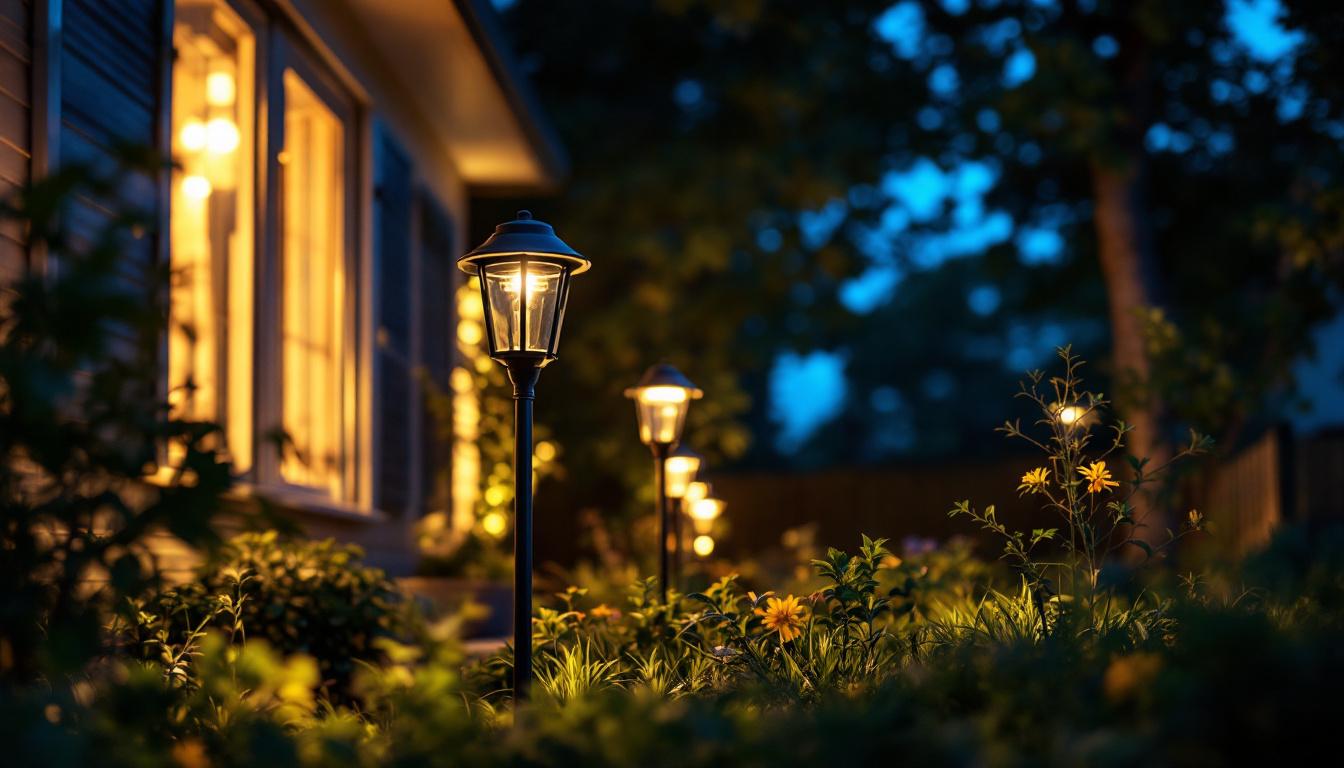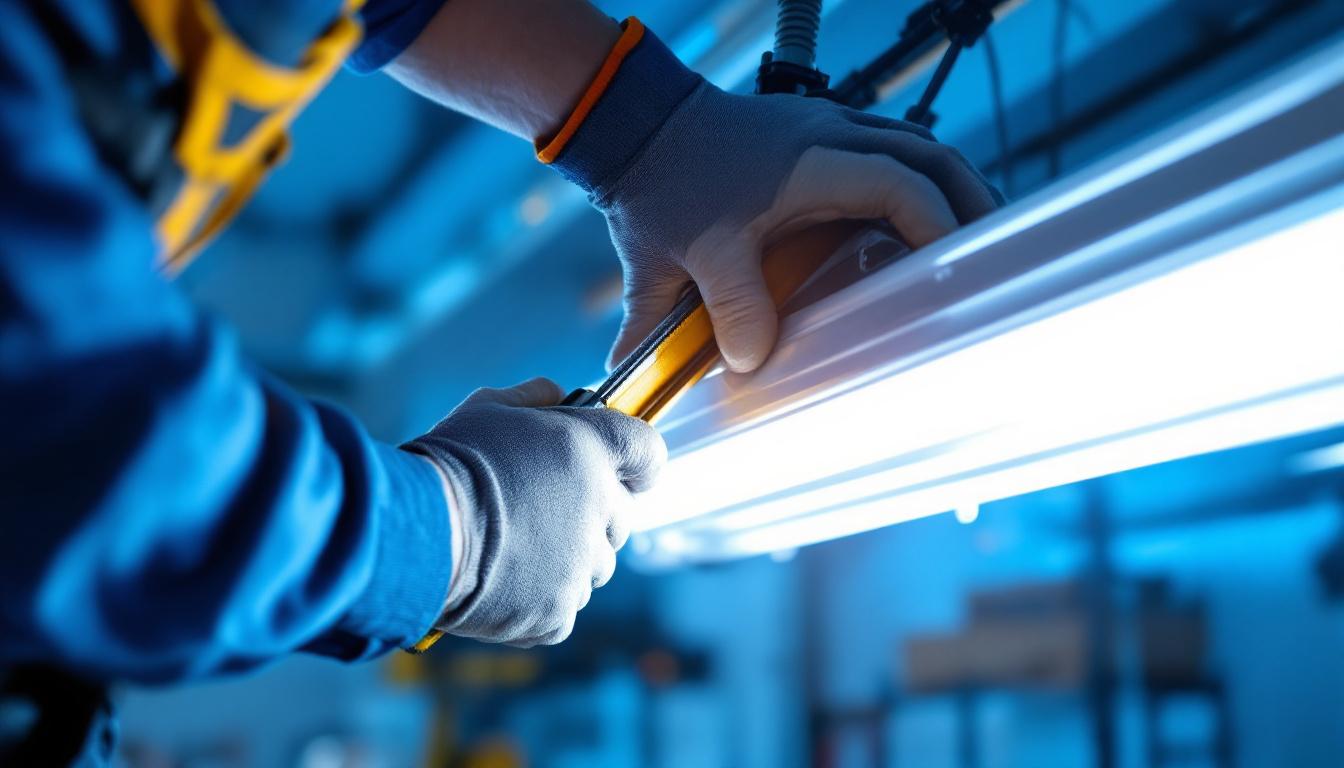
When advising clients on ceiling fans, lighting contractors must consider various cost factors beyond the sticker price. Ceiling fans range widely in price, typically from $50 to over $500, depending on design, features, and brand reputation. However, the initial purchase price is only part of the equation; installation, maintenance, and energy consumption also contribute significantly to the overall cost.
Basic models often come with limited lighting options, such as a single incandescent bulb fixture, while premium fans may include integrated LED lighting systems designed for energy efficiency and enhanced illumination. Contractors should evaluate how these lighting components affect both upfront costs and long-term energy savings. For instance, while a basic fan may seem budget-friendly at first glance, the energy costs associated with incandescent bulbs can accumulate over time, making LED options more attractive in the long run. Furthermore, the color temperature and brightness of the lighting can greatly influence the ambiance of a room, which is an important consideration for clients looking to create a specific atmosphere.
Additionally, installation complexity influences labor costs. Fans with advanced features like remote controls, reversible motors, or smart home integration may require more time and expertise to install, increasing the total expense. Understanding these variables allows contractors to provide accurate estimates and tailor recommendations to client budgets and needs. It’s also essential to consider the location of the installation; for example, installing a ceiling fan in a vaulted ceiling may necessitate additional equipment like downrods, which can further impact costs. Moreover, factors such as the ceiling height and the structural integrity of the mounting surface can dictate whether additional reinforcements are needed, thus influencing both safety and overall installation expenses.
Moreover, the choice of materials used in the fan’s construction can also play a significant role in determining the total cost. Fans made from high-quality metals or weather-resistant materials may come with a higher price tag but can offer durability and longevity, making them a worthwhile investment. In contrast, cheaper plastic models might save money initially but could lead to more frequent replacements due to wear and tear. This aspect is particularly crucial for outdoor ceiling fans, which must withstand various weather conditions. Therefore, contractors should educate clients about the trade-offs between initial costs and long-term value, helping them make informed decisions that align with their lifestyle and preferences.
Lighting technology plays a pivotal role in the energy efficiency of ceiling fans. Traditional incandescent bulbs consume significantly more power compared to modern LED alternatives. LEDs not only reduce electricity consumption but also offer longer lifespans, minimizing replacement frequency and maintenance costs. The energy savings can be substantial, with LED bulbs using up to 80% less energy than their incandescent counterparts, making them a wise investment for both residential and commercial spaces.
For lighting contractors, specifying ceiling fans equipped with high-quality LED modules ensures clients benefit from lower utility bills and improved environmental impact. Additionally, LED lighting provides better color rendering and brightness control, enhancing the ambiance of the space. This is particularly important in settings where the quality of light can affect mood and productivity, such as in home offices or creative studios. The ability to choose from various color temperatures also allows homeowners to create the perfect atmosphere for any occasion, from warm and cozy to bright and energizing.
Integrating advanced control systems with ceiling fan lighting can optimize energy use. Dimmers, timers, and occupancy sensors allow precise management of light levels and operating times, preventing unnecessary power consumption. Smart controls that connect to home automation systems offer further convenience and efficiency, enabling users to adjust settings remotely via smartphone apps or voice commands. This level of control not only enhances user experience but also promotes energy conservation by ensuring lights are only on when needed.
By recommending fans with versatile control options, contractors can help clients achieve a balance between comfort, aesthetics, and energy savings. This approach aligns with growing consumer demand for sustainable and user-friendly home solutions. Furthermore, the integration of energy monitoring features can provide valuable insights into usage patterns, allowing homeowners to make informed decisions about their energy consumption. As the market continues to evolve, staying informed about the latest technologies and trends in ceiling fan lighting will empower contractors to provide the best solutions for their clients, ensuring both satisfaction and sustainability in their projects.
The size and blade design of a ceiling fan influence airflow and, indirectly, lighting effectiveness. Larger fans with aerodynamic blades can circulate air more efficiently, allowing for lower light levels to maintain occupant comfort. This synergy reduces the need for excessive lighting intensity, contributing to overall energy savings.
Contractors should assess room dimensions and ceiling height to recommend appropriately sized fans. Oversized fans in small rooms may cause discomfort, while undersized fans in large spaces fail to provide adequate circulation. Proper sizing ensures that lighting and cooling work harmoniously. Additionally, the material and finish of the fan blades can also play a significant role in enhancing the aesthetic appeal of a room while maximizing functionality. For instance, wooden blades can add warmth to a rustic setting, while sleek metallic finishes may complement modern decor. The choice of finish not only impacts the visual design but can also affect how light interacts with the fan, potentially enhancing the overall illumination of the space.
The positioning of light fixtures on ceiling fans affects illumination distribution. Centralized fixtures provide general lighting, while multi-directional or adjustable fixtures can highlight specific areas or create layered lighting effects. Selecting fans with versatile lighting configurations enables customization to suit various interior layouts.
For example, fans with integrated uplights can reflect light off the ceiling, producing softer ambient lighting that reduces glare and eye strain. Combining uplights with downlights creates balanced illumination, enhancing both functionality and aesthetics. Furthermore, the use of dimmable LED bulbs in these fixtures allows for greater control over light intensity, enabling users to adjust the ambiance according to different activities, whether it’s a cozy family gathering or a lively dinner party. The strategic placement of fixtures can also enhance architectural features in a room, such as highlighting artwork or accentuating textured walls, thereby enriching the overall visual experience and making the space feel more inviting.
While premium ceiling fans with advanced lighting features often carry higher upfront costs, the long-term savings in energy and maintenance can justify the investment. LED-equipped fans consume up to 80% less energy than those with incandescent bulbs, translating into substantial utility bill reductions over time.
Moreover, durable components and quality construction reduce the likelihood of repairs or replacements, further lowering lifetime costs. Lighting contractors should present clients with comprehensive cost-benefit analyses to highlight these advantages, facilitating informed decision-making.
Many utility companies and government programs offer rebates or incentives for installing energy-efficient lighting and appliances, including ceiling fans with LED lighting. Contractors can leverage these programs to reduce the effective cost for clients, making high-efficiency options more accessible.
Staying informed about local and national incentives enables contractors to provide added value and competitive advantages. Encouraging clients to take advantage of such programs supports sustainable practices and promotes customer satisfaction.
Correct installation is crucial to maximize the efficiency and lifespan of ceiling fan lighting. Using compatible dimmers and controls designed for LED lighting prevents flickering and premature bulb failure. Additionally, ensuring secure wiring connections reduces electrical resistance and energy loss.
Contractors should verify that existing electrical infrastructure supports the chosen fan’s requirements, including voltage and amperage specifications. Upgrading wiring or switches may be necessary to achieve optimal performance.
Installing ceiling fans in central locations within rooms ensures even light distribution and airflow. Avoiding placement near obstructions like beams or low-hanging fixtures prevents shadows and airflow disruption. For rooms with multiple fans, coordinating placement and lighting levels prevents overlap and energy waste.
Proper mounting height also influences lighting effectiveness. Fans installed too close to the ceiling may not provide sufficient illumination, while those hung too low can cause glare or interfere with movement. Following manufacturer guidelines and industry standards ensures balanced lighting outcomes.
Dust accumulation on fan blades and light fixtures diminishes both airflow and light output. Routine cleaning enhances performance and extends equipment life. Contractors can educate clients on effective maintenance practices or offer periodic service plans.
Inspecting electrical components for wear or damage prevents safety hazards and maintains consistent lighting quality. Early detection of issues reduces downtime and repair costs.
Although LEDs have long lifespans, eventual replacement is necessary. Using manufacturer-recommended bulbs or modules ensures compatibility and preserves energy efficiency. Avoiding generic or incompatible parts prevents performance degradation.
Contractors should advise clients on signs indicating replacement needs, such as flickering, dimming, or color shifts. Proactive maintenance supports sustained lighting quality and client satisfaction.
For lighting contractors, understanding the multifaceted costs and efficiency factors of ceiling fan lighting is essential to guide clients effectively. Evaluating initial price alongside energy consumption, installation complexity, and maintenance requirements enables comprehensive recommendations tailored to client priorities.
By prioritizing energy-efficient lighting technologies, optimizing design and placement, and adhering to best installation and maintenance practices, contractors can enhance lighting performance while minimizing costs. Leveraging rebates and educating clients on long-term benefits further strengthens the value proposition.
Ultimately, a strategic approach to ceiling fan lighting not only improves occupant comfort and aesthetics but also supports sustainable energy use, aligning with evolving industry standards and consumer expectations.
Ready to elevate your lighting projects with ceiling fans that blend efficiency, style, and affordability? Look no further than LumenWholesale. Our extensive selection of spec-grade ceiling fans is designed to meet your needs for quality and performance, all at unbeatable wholesale prices. Say goodbye to middleman markups and hello to hassle-free bulk buying with free shipping. Make the smart choice for your lighting solutions and experience the best value in wholesale lighting today with LumenWholesale.

Discover how LED conversion kits for recessed lighting can enhance profitability in lighting installations.

Explore the transformative impact of solar and battery lights through real-world success stories tailored for lighting contractors.

Discover the step-by-step guide to replacing a fluorescent light ballast with expert tips from seasoned lighting contractors.

Discover how LED lighting products are revolutionizing the future of design and installation.